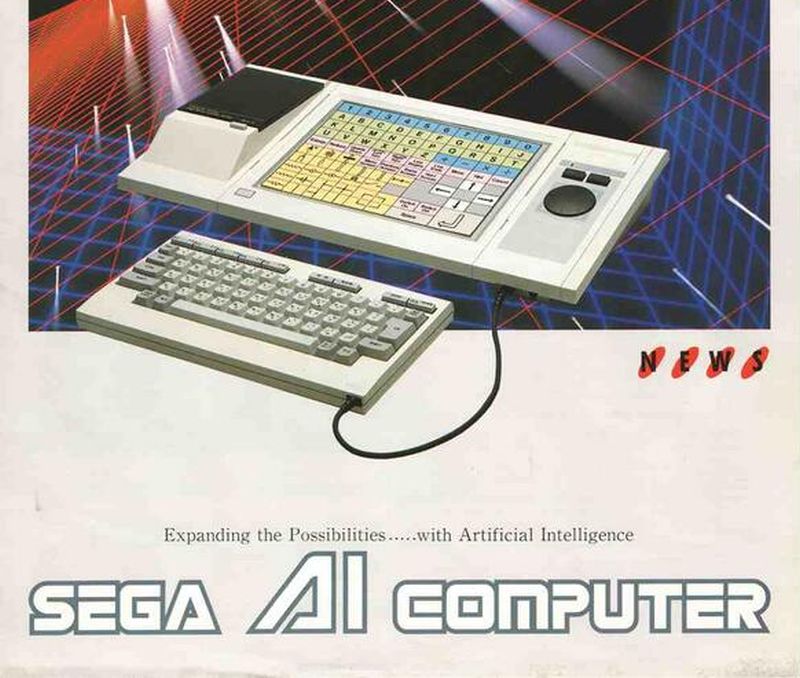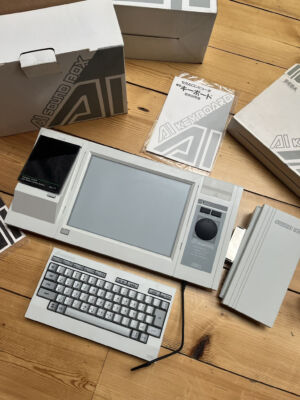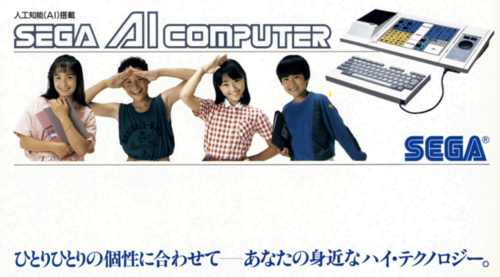
Even massive Sega fans would be forgiven for not being too familiar with the Sega AI Computer. After all, the usually obsessive documentation over at Sega Retro includes only the barest stub of an information page for the quixotic, education-focused 1986 hardware.
Luckily, the folks at the self-described “Sega 8-bit preservation and fanaticism” site SMS Power have been able to go a little deeper. The site’s recently posted deep dive on the Sega AI Computer includes an incredible amount of well-documented information on this historical oddity, including ROMs for dozens of previously unpreserved pieces of software that can now be partially run on MAME.
An ’80s vision of AI’s future

The Sega AI Computer sports a 16-bit NEC chip running at a blazing 5 Mhz and a massive 128 KB of RAM (those adjectives were much less ironic when the computer was released in 1986). SMS Power’s research suggests the device was “mostly sold to Japanese schools” between 1986 and 1989, which helps explain its overall obscurity decades later. Ads from the time suggest a US version was briefly planned but never released.
Despite the Japan-only release, the Sega AI Computer’s casing includes an English-language message stressing its support for the AI-focused Prolog language and a promise that it will “bring you into the world of artificial intelligence.” Indeed, a 1986 article in Electronics magazine (preserved by SMS Power) describes what sounds like a kind of simple and wholesome early progenitor of today’s world of generative AI creations:
In the prompt mode, the child is asked about his or her activities during the day and replies with one- and two-word answers. The computer program then writes a grammatically correct diary entry based on those replies. In more advanced CAI applications, the computer is more flexible than previous systems. It can parse a user’s natural-language inputs and evaluate the person’s ability level. It can then proceed to material of appropriate difficulty, rather than simply advancing one level at a time.
Besides its unique focus on an ’80s-era vision of AI, the Sega AI Computer is also notable for its use of a controller that features a large rectangular touch surface that could be customized with overlays included in the software to make a brand-new interface. The system also features a built-in speech synthesizer that could recreate basic Japanese phonemes and an FM audio chip that could play back samples like those stored on some of the system’s cassette-tape software.
A preservation mountain climb

While the general existence of the Sega AI Computer has been generally known in certain circles for a while, detailed information about its workings and software were extremely hard to come by, especially in the English-speaking world. That began to change in 2014 when a rare Yahoo Auctions listing offered a boxed AI Computer along with 15 pieces of software. The site was able to crowdfund the winning bid on that auction (which reportedly ran the equivalent of $1,100) and later obtained a keyboard and more software from the winner of a 2022 auction.
SMS Power notes that the majority of the software it has uncovered “had zero information about them on the Internet prior to us publishing them: no screenshots, no photos or scans of actual software.” Now, the site’s community has taken the trouble to preserve all those ROMs and create a new MAME driver that already allows for “partial emulation” of the system (which doesn’t yet include a keyboard, tape drive, or speech emulation support).
The title screen of a Gulliver’s Travels-themed piece of software for the Sega AI Computer.
That dumped software is all “educational and mostly aimed at kids,” SMS Power notes, and is laden with Japanese text that will make it hard for many foreigners to even tinker with. That means this long-lost emulation release probably won’t set the MAME world on fire as 2022’s surprise dump of Marble Madness II did.
Still, it’s notable just how much effort the community has put in to fill in a formerly black hole in our understanding of this corner of Sega history. SMS Power’s write-up of its findings is well worth a full look, as is the site’s massive Google Drive, which is filled with documentation, screenshots, photos, contemporaneous articles and ads, and much more.

